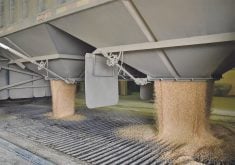It wasn’t the usual way for the Saskatchewan Crop Insurance Corp. to announce its offering for the upcoming year. When it isn’t particularly good news, governments would rather not attract more attention than necessary.
It’s become the norm in the last half of February for Saskatchewan’s agriculture minister to be joined by SCIC officials to announce the program for the growing season ahead, complete with information on average coverage per acre.
Program enhancements such as coverage for a new crop or a different coverage option are typically part of the announcement.
Read Also

Kochia has become a significant problem for Prairie farmers
As you travel through southern Saskatchewan and Alberta, particularly in areas challenged by dry growing conditions, the magnitude of the kochia problem is easy to see.
Not this year.
Federal and provincial funding was announced in a news release, but no news conference was held.
There was no reason to believe funding wouldn’t be provided for this most important of the business risk management programs, so that wasn’t really news.
The release talked about ongoing work to improve forage insurance without anything tangible for this year.
In subsequent interviews, crop insurance officials said too much variation exists in producer coverage levels to give information on coverage levels or premiums per acre. Somehow that hadn’t been a problem in previous years.
Not part of the release, but available shortly thereafter at saskcropinsurance.com, were the commodity prices that will be used for the upcoming season. These are the real news, and they weren’t very good this year.
For canola, the crop insurance price is $13.50 a bushel, whereas last year it was $15.08.
Crop insurance prices are set based on estimates by Agriculture Canada. With canola being the biggest acreage crop, the price drop means a big drop in overall coverage.
Manitoba announces its program a month earlier than Saskatchewan and Alberta and uses a correspondingly earlier price estimate. Sometimes that results in a price discrepancy, but Manitoba’s crop insurance price for canola is only slightly higher at $13.61.
For CWRS wheat, the Saskatchewan price has been set at $7.74 a bu., down from $8.55 last year. By comparison, the Manitoba price is $8.84 this year.
Durum in Saskatchewan has been set at $8.01 a bu., which seems a bit low based on new crop offerings. This is only a small premium above spring wheat, and durum is down dramatically from last year’s $10.86 a bu.
Feed barley is $4.68 a bu., down from $5.44 last year. Alberta’s crop insurance price is $5.56 this year, reflecting the higher bids from that province’s feedlot industry. Saskatchewan oats at $3.31 are down from $4.16 last year.
Continuing with the bad news, canaryseed is 32 cents a pound, down from 36 cents. The three types of mustard are slightly more than half of last year’s crop insurance prices with yellow at 35.6 cents a lb. and brown at 27.2 cents.
Large kabuli chickpeas have taken a hit and are 34 cents a lb. versus 46 cents last year.
A few crops are better than last year. Flax at $15.25 a bu. is higher than last year’s $13.85. Peas are pegged at $10.37 a bu., up from $9.58 last year. Red lentils at 31 cents a lb. are three cents higher than last year and large green lentils at 46 cents a lb. are one cent higher.
As this is being written, producers will be able to find their individual coverage and premium levels online with information packages also being mailed.
Yield coverage and premiums per acre will vary from one producer to the next, but for most producers, crop insurance coverage will be lower in 2025 due to lower commodity prices.
Kevin Hursh is an agricultural journalist, consultant and farmer. He can be reached by e-mail at kevin@hursh.ca.


















